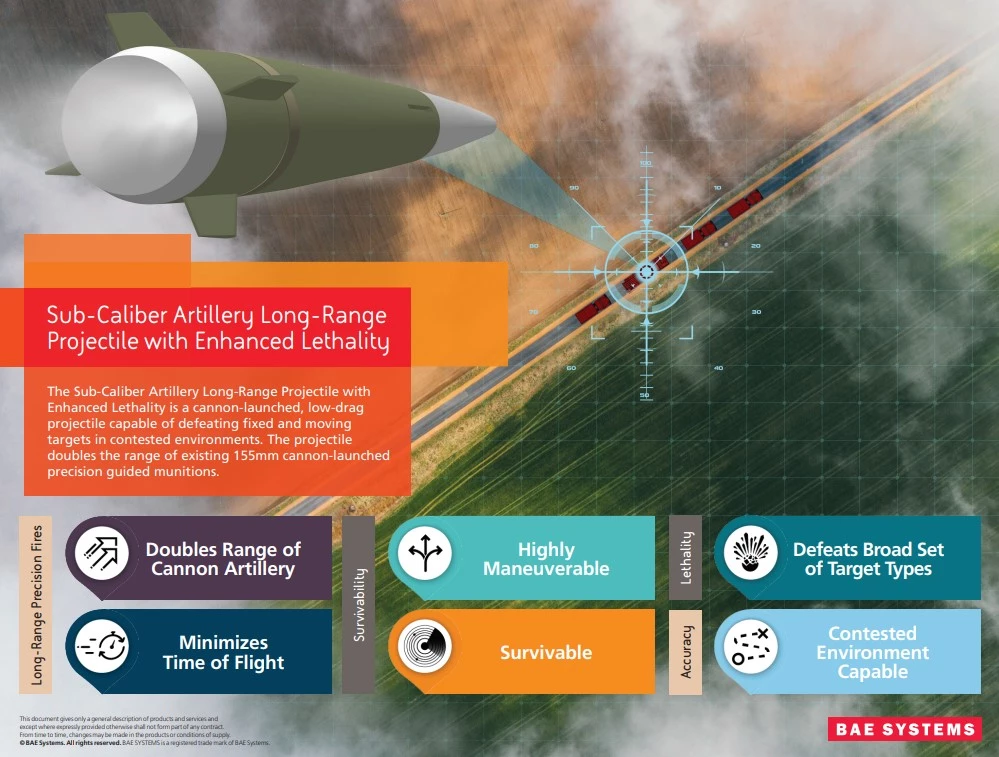BAE Systems and the US Army have successfully test fired a Sub-Caliber Artillery Long-Range Projectile with Enhanced Lethality from a 155 mm XM907E2 cannon at the White Sands Missile Range in New Mexico with double the range of current precision guided munitions.
The recent test, which was the latest for the US Army's XM1155 sub-caliber program, is particularly pertinent because of the arms buying spree sparked by NATO countries sending arms to Ukraine to battle the Russian invasion now in its second year. The US arsenal has been virtually stripped of 155 mm artillery shells and the US Department of Defense has ordered production of these munitions to sextuple over the next five years.
This has produced a situation where the US military has a powerful incentive to not only buy more 155 mm shells, but to buy the most technologically advanced version.
The Sub-Caliber Artillery Long-Range Projectile is designed to strike targets at long range with extremely high precision using a standard 155 mm gun. It can hit both stationary and moving targets at ranges of well over 68 miles (110 km), greater than the range of its predecessor. The ultimate objective of the shell is to achieve one-shot, one-kill. In other words, an artillery unit would be able to fire a round with a high degree of probability of destroying their target and immediately leave the area before a counterattack.

The details of the new projectile haven't been released, though we do know that it's a sabot round. That is, the projectile is sealed in a canister that strips away when it leaves the gun muzzle, revealing the aerodynamic projectile. In flight, the projectile deploys fins and wings and a motor (a rocket or a ramjet) to provide additional speed and range.
Inside, there is an avionics package to guide the projectile to its target and electronic countermeasures to fend off hostile jamming. This is particularly impressive engineering because these electronics must withstand a shock of 15,500 gs when fired from the gun.
"This successful test confirms our Sub-Caliber Artillery Long-Range Projectile with Enhanced Lethality can defeat long-range targets and advance to follow-on testing out to double the range of existing guided projectile (sic) and with sensors to find fixed and moving targets of interest," said Brent Butcher, vice president and general manager of Weapon Systems at BAE Systems. "We are confident that the projectile is on track to provide the Army the best munitions solution for cannon artillery with a leap ahead capability that will bring a highly lethal, maneuverable projectile to soldiers on the battlefield."
Source: BAE Systems





